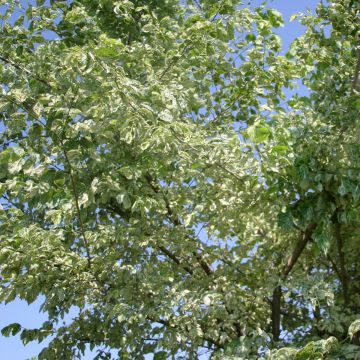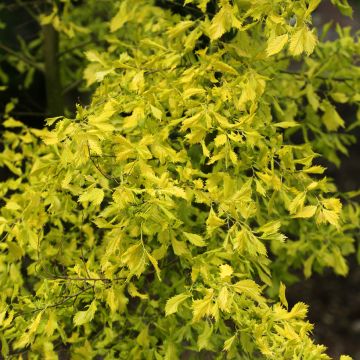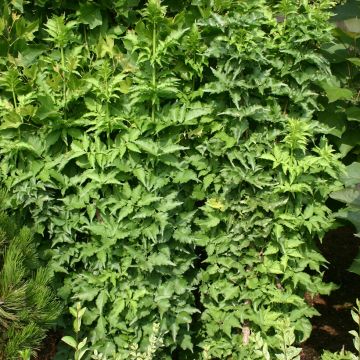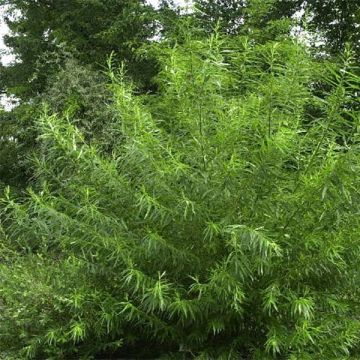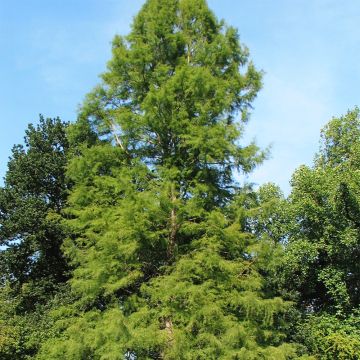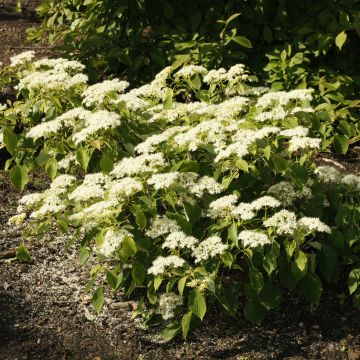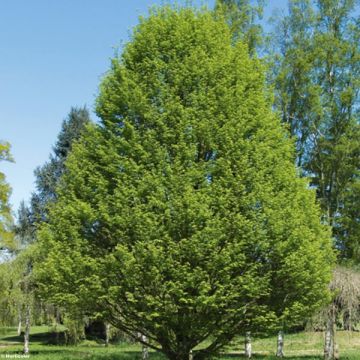

Ulmus minor - Elm


Ulmus minor - Elm
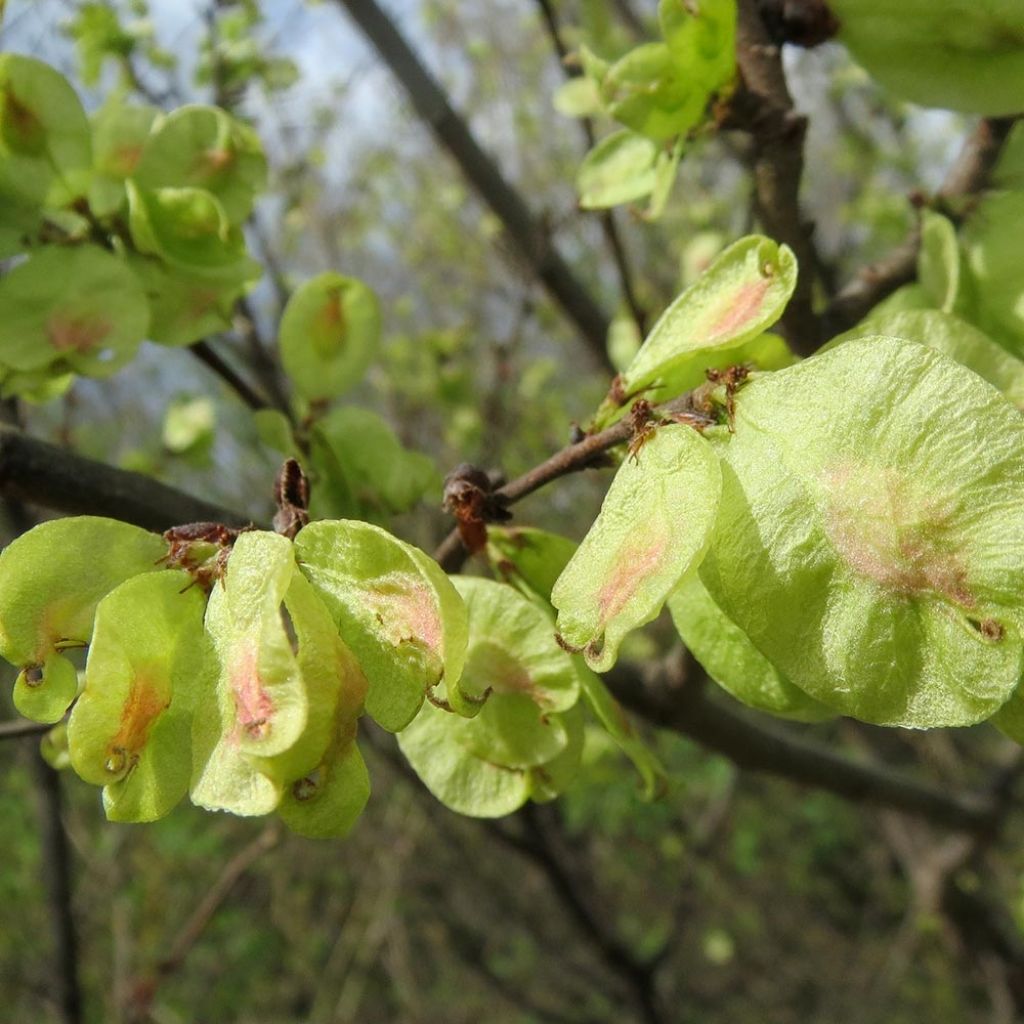

Ulmus minor - Elm
Ulmus minor - Elm
Ulmus minor
European field elm, Field elm, English elm, Smooth-leaved elm
Roots almost non-existent, I'll be lucky if it recovers... I take this opportunity to complain here: The website is much more sales-oriented than reality, the plants are mostly smaller than the advertised heights, some in poor cultivation condition (roots, not straight trunks, forks), while the prices are quite high. (I don't mind paying a little more for the botanical information and articles you provide, but the quality must also be there.) Add a delivery delay of about 1 month due to supply issues with certain plants, the delivery driver who can't find my address (ok PMDF is not to blame, like the parcels that are always mishandled because no delivery person bothers to keep them horizontal)... Bad experience, I try to favor the local nursery where I go to benefit from a cheaper "direct producer" price, but there is less choice... So probably a few more orders in the future, but I hope to quickly end the home plant delivery that I don't find great in addition to being an ecological nonsense and contributing to traffic congestion.
Damien, 19/12/2024
This item cannot be shipped to the selected country
Oversize package delivery charge from €6.90
Delivery charge from €5.90
Delivery to Corse prohibited
More information
Schedule delivery date,
and select date in basket
This plant carries a 24 months recovery warranty
More information
We guarantee the quality of our plants for a full growing cycle, and will replace at our expense any plant that fails to recover under normal climatic and planting conditions.
Oversize package: home delivery by special carrier from €6.90 per order..
Express home delivery from €8.90.
From €5.90 for pickup delivery and €6.90 for home delivery
Express home delivery from €8.90.
Delivery to Corse prohibited: UE law prohibits the import of this plant from mainland France to Corse as part of the fight against Xylella fastidiosa. Please accept our sincere apologies.
More information
Does this plant fit my garden?
Set up your Plantfit profile →
Description
Ulmus minor, the Field Elm, was a large and beautiful deciduous tree emblematic of all our landscapes, before a formidable epidemic of Dutch elm disease decimated the large specimens in the 1970s. Today, it survives in a few gardens where it can reach a venerable age. Appreciated for the shade it provides in summer, useful for the small fauna of the garden, the field elm also offers beautiful autumn colours. A true relic of our indigenous flora, it is perfectly adapted to our climates, tolerating a wide range of neutral to basic soils, including heavy, calcareous, and fairly dry soils. This elm is reserved for large gardens.
Ulmus minor (syn. Ulmus campestris) belongs to the Ulmaceae family. It is native to a vast area covering Europe, Asia Minor, and North Africa. Nowadays, this elm can still be found here and there, in the form of coppices, regularly cut back due to the disease. A few rare individuals seem to escape the disease, and the species also survives in the form of attractive horticultural varieties with reduced growth. It is quite variable in appearance.
The field elm generally has an upright habit and a very wide crown. It is a large, hardy deciduous tree that grows quite quickly, reaching about 25m (82ft) in height and 18 to 20 m (59 to 66ft) in spread, depending on growing conditions. The bark that covers the trunk and branches is initially smooth, before cracking over time. It sometimes develops corky growths. The foliage resembles that of hazelnut and alder, but the lamina is asymmetrical at the base, at the petiole level. The leaves, measuring 8 to 10cm (3 to 4in) in length, are ovate-rounded, rough, and finely toothed along the edges. Initially tender green, they become a vivid green on the upper side, with the undersides punctuated by reddish glandular spots with small hairs. The foliage takes on beautiful golden yellow colours in autumn before falling. Ulmus minor produces inconspicuous flowering in March-April, before the leaves appear, with clusters of small red flowers developing on two-year-old branches. The female trees produce winged bi-coloured fruits, which are light red in the centre and lime green-yellow on the edges.
Grow the Field Elm in isolation, in a garden large enough to accommodate it. When space is not a constraint, its countryside character blends well with that of maples (Acer campestre, A. griseum), hornbeams, beech, and lime trees. This tree is usually planted for the long term, in a park alongside other very durable species such as oaks, cedars, chestnuts, horse chestnuts, and plane trees.
Report an error about the product description
Ulmus minor - Elm in pictures
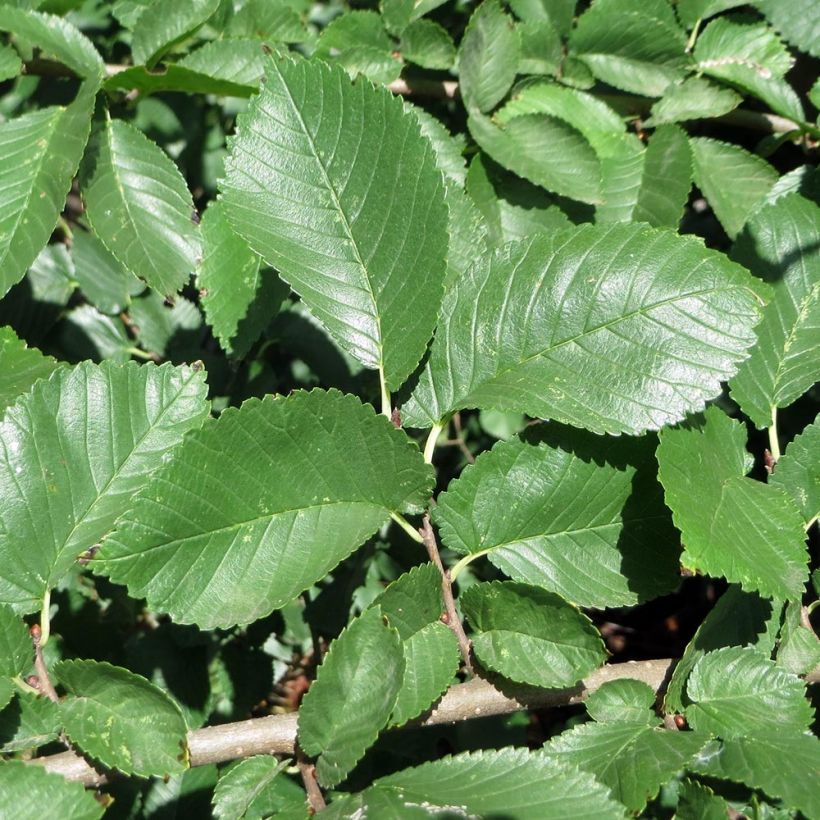





Plant habit
Flowering
Foliage
Botanical data
Ulmus
minor
Ulmaceae
European field elm, Field elm, English elm, Smooth-leaved elm
Western Europe
Other Ulmus - Elm
Planting and care
Plant in autumn in ordinary soil, even heavy or limestone. Although it grows faster in moist soil, it adapts perfectly to drier lands. Plant it in a sunny or semi-shaded position, without burning sun. It adapts to most climates, but does not like acidic soils. Water and mulch in the first summers. Prune in winter to balance its branches if necessary.
In the 70s, an epidemic of Dutch elm disease greatly reduced the population of elms in Europe. Following this event, a monitoring program was put in place. The disease is caused by a fungus (cryptogamic disease = disease caused by a fungus) which is transmitted by a beetle called the elm bark beetle. The first symptoms appear on a branch of the canopy and are characterised by wilting and folding of the leaves during the growing season. Generally, the elm bark beetles invade large specimens exceeding 2m (7ft) in height. Only biological solutions remain effective, such as pheromone traps or the introduction of elm bark beetle predators.
Planting period
Intended location
Care
-
, onOrder confirmed
Reply from on Promesse de fleurs
Trees and large shrubs
Haven't found what you were looking for?
Hardiness is the lowest winter temperature a plant can endure without suffering serious damage or even dying. However, hardiness is affected by location (a sheltered area, such as a patio), protection (winter cover) and soil type (hardiness is improved by well-drained soil).

Photo Sharing Terms & Conditions
In order to encourage gardeners to interact and share their experiences, Promesse de fleurs offers various media enabling content to be uploaded onto its Site - in particular via the ‘Photo sharing’ module.
The User agrees to refrain from:
- Posting any content that is illegal, prejudicial, insulting, racist, inciteful to hatred, revisionist, contrary to public decency, that infringes on privacy or on the privacy rights of third parties, in particular the publicity rights of persons and goods, intellectual property rights, or the right to privacy.
- Submitting content on behalf of a third party;
- Impersonate the identity of a third party and/or publish any personal information about a third party;
In general, the User undertakes to refrain from any unethical behaviour.
All Content (in particular text, comments, files, images, photos, videos, creative works, etc.), which may be subject to property or intellectual property rights, image or other private rights, shall remain the property of the User, subject to the limited rights granted by the terms of the licence granted by Promesse de fleurs as stated below. Users are at liberty to publish or not to publish such Content on the Site, notably via the ‘Photo Sharing’ facility, and accept that this Content shall be made public and freely accessible, notably on the Internet.
Users further acknowledge, undertake to have ,and guarantee that they hold all necessary rights and permissions to publish such material on the Site, in particular with regard to the legislation in force pertaining to any privacy, property, intellectual property, image, or contractual rights, or rights of any other nature. By publishing such Content on the Site, Users acknowledge accepting full liability as publishers of the Content within the meaning of the law, and grant Promesse de fleurs, free of charge, an inclusive, worldwide licence for the said Content for the entire duration of its publication, including all reproduction, representation, up/downloading, displaying, performing, transmission, and storage rights.
Users also grant permission for their name to be linked to the Content and accept that this link may not always be made available.
By engaging in posting material, Users consent to their Content becoming automatically accessible on the Internet, in particular on other sites and/or blogs and/or web pages of the Promesse de fleurs site, including in particular social pages and the Promesse de fleurs catalogue.
Users may secure the removal of entrusted content free of charge by issuing a simple request via our contact form.
The flowering period indicated on our website applies to countries and regions located in USDA zone 8 (France, the United Kingdom, Ireland, the Netherlands, etc.)
It will vary according to where you live:
- In zones 9 to 10 (Italy, Spain, Greece, etc.), flowering will occur about 2 to 4 weeks earlier.
- In zones 6 to 7 (Germany, Poland, Slovenia, and lower mountainous regions), flowering will be delayed by 2 to 3 weeks.
- In zone 5 (Central Europe, Scandinavia), blooming will be delayed by 3 to 5 weeks.
In temperate climates, pruning of spring-flowering shrubs (forsythia, spireas, etc.) should be done just after flowering.
Pruning of summer-flowering shrubs (Indian Lilac, Perovskia, etc.) can be done in winter or spring.
In cold regions as well as with frost-sensitive plants, avoid pruning too early when severe frosts may still occur.
The planting period indicated on our website applies to countries and regions located in USDA zone 8 (France, United Kingdom, Ireland, Netherlands).
It will vary according to where you live:
- In Mediterranean zones (Marseille, Madrid, Milan, etc.), autumn and winter are the best planting periods.
- In continental zones (Strasbourg, Munich, Vienna, etc.), delay planting by 2 to 3 weeks in spring and bring it forward by 2 to 4 weeks in autumn.
- In mountainous regions (the Alps, Pyrenees, Carpathians, etc.), it is best to plant in late spring (May-June) or late summer (August-September).
The harvesting period indicated on our website applies to countries and regions in USDA zone 8 (France, England, Ireland, the Netherlands).
In colder areas (Scandinavia, Poland, Austria...) fruit and vegetable harvests are likely to be delayed by 3-4 weeks.
In warmer areas (Italy, Spain, Greece, etc.), harvesting will probably take place earlier, depending on weather conditions.
The sowing periods indicated on our website apply to countries and regions within USDA Zone 8 (France, UK, Ireland, Netherlands).
In colder areas (Scandinavia, Poland, Austria...), delay any outdoor sowing by 3-4 weeks, or sow under glass.
In warmer climes (Italy, Spain, Greece, etc.), bring outdoor sowing forward by a few weeks.




































